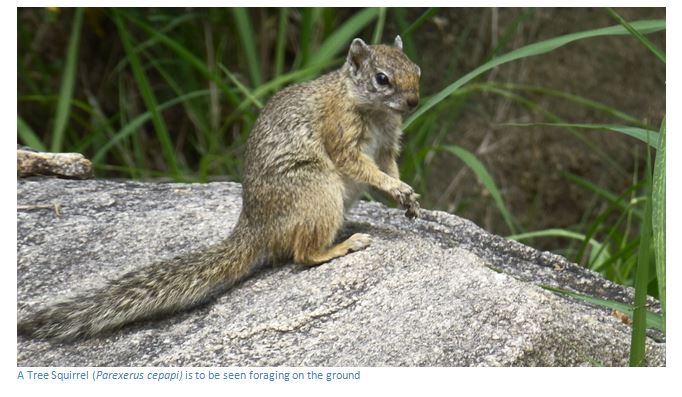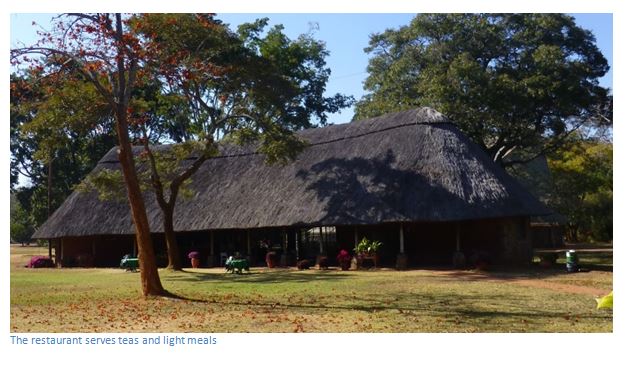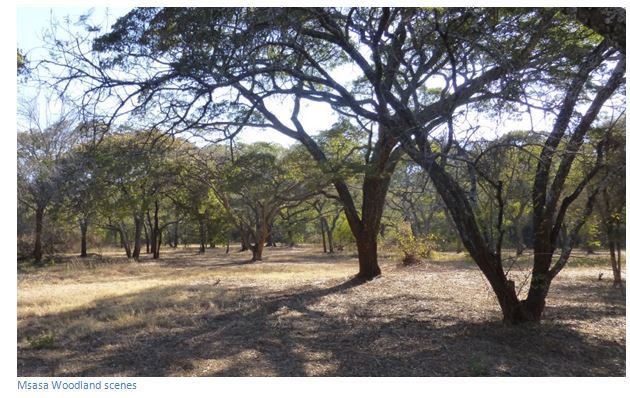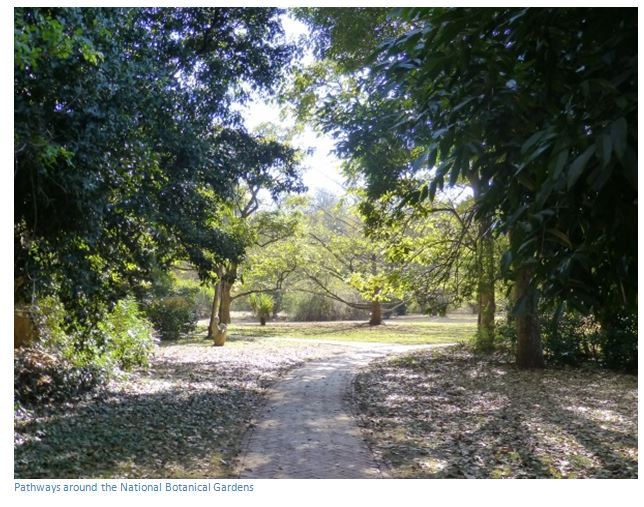National Botanical Gardens
- For anyone interested in Zimbabwe plants or woodland habitats this is a good place to visit.
- It is a great place to walk one's dog, have a light meal in the restaurant, and generally enjoy the different woodland environments. For anyone needing some fresh air, but not wishing to travel far, what could be a better place to walk around?
- The National Botanic Garden of Zimbabwe is situated about 4 km North of Harare City Centre in the suburb of Alexandra Park. It also houses the National Herbarium of Zimbabwe. The gardens have an area of almost 7 square kilometres. Initially established as a recreation area in 1902, it became the National Botanic Gardens in 1962 under the direction of Dr. Hyram Wilder. Half of the gardens are devoted to indigenous plants from Zimbabwe’s woodlands and include most of the 750 species found in the country. Other areas contain plants typical to the African continent including rare and endangered species, as well as exotics from South America, India, Australia and the Far East
The National Botanical gardens are just north of the city centre at Fifth Street and Sandringham Drive, Alexandra Park, Harare.
GPS Reference: 17⁰48′05.50″S 31⁰03′03.59″E
Over 900 trees and shrubs of Zimbabwe are carefully grouped in sections to show the associations that are found in various parts of the country. It has sections with trees of the Highveld, Lowveld, and Eastern Highlands. There are also a number of trees from other countries that have climatic conditions similar to Zimbabwe e.g. Asia and Australia. Thus, the car park area is Zambezi lowveld tree savannah; adjacent to East and West African forest, but cross the lawn and you are in Zimbabwean rainforest moving onto Highveld savannah woodland.
The National Herbarium and Botanic Garden is a centre for research and information on the indigenous plants of Zimbabwe and is responsible for the study of Zimbabwe flora in order to promote its conservation, development, and sustainable use. Its mission is To Increase the knowledge and appreciation of Zimbabwean plants and it fulfils this mission by looking after the plant specimens that are the essential resource material required in studying plant characters in order to arrive at their identity and names. The National Herbarium stores preserved plant specimens, while the living specimens are grown in the National Botanic Garden.
The Herbarium has about 500,000 plant specimens and is the main reference centre for research on identifying and naming plants of the Flora Zambesiaca Region. This region comprises Zimbabwe, Zambia, Malawi, Mozambique, Botswana, and Caprivi.
The rain forest has suffered, because the pumps that used to circulate water down a miniature stream bed no longer function, the pond which used to be a frenzy of water birds and full of reed beds and lily pads has leaked and dried up, but the tree fabric remains, even if it is the more hardy species that have survived. The gardens have seen better days and the natural woodland areas are thriving probably because they require least attention. However, this large space is still a wonderful amenity and a pleasure to stroll around, enjoy the twisted tree shapes, watch the birds, and listen to the seedpods cracking under your feet.
At one time, there were reports of isolated muggings, but this no longer seems to be a problem although walking at dusk alone and without a dog may be taking a risk.




